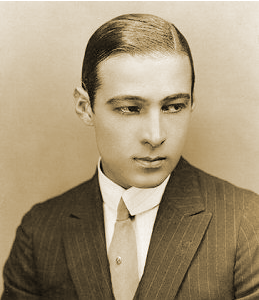1920s Mens Hairstyles Biography
Source:-Google.com.pk
A hairstyle, hairdo, or haircut refers to the styling of hair, usually on the human head. The fashioning of hair can be considered an aspect of personal grooming, fashion, and cosmetics, although practical, cultural, and popular considerations also influence some hairstyles.n modern usage, the term "Bohemian" is applied to people who live unconventional, usually artistic, lives. The adherents of the "Bloomsbury Group", which formed around the Stephen sisters, Vanessa Bell and Virginia Woolf in the early 20th century, are among the best-known examples. The original "Bohemians" were travelers or refugees from central Europe (hence, the French bohémien, for "gypsy").Throughout history, people have worn their hair in a wide variety of ways, largely determined by the fashions of the culture they live in. Hairstyles are markers and signifiers of social class, age, marital status, racial identification, political beliefs and attitudes about gender.In many cultures, often for religious reasons, women's hair is covered while in public, and in some, such as Haredi Judaism or European Orthodox communities, women's hair is shaved or cut very short, and covered with wigs.Only since the end of World War I have women begun to wear their hair short and in fairly natural styles.In ancient civilizations, women's hair was often elaborately and carefully dressed in special ways. Women coloured their hair, curled it, and pinned it up in a variety of ways. They set their hair in waves and curls using wet clay, which they dried in the sun and then combed out, or else by using a jelly made of quince seeds soaked in water, or curling tongs and curling irons of various kinds.Between 27 BC and 102 AD, in Imperial Rome, women wore their hair in complicated styles: a mass of curls on top, or in rows of waves, drawn back into ringlets or braids. Eventually noblewomen's hairstyles grew so complex that they required daily attention from several slaves and a stylist in order to be maintained. The hair was often lightened using wood ash, unslaked lime and sodium bicarbonate, or darkened with copper filings, oak-apples or leeches marinated in wine and vinegar. It was augmented by wigs, hairpieces and pads, and held in place by nets, pins, combs and pomade. Under the Byzantine Empire, noblewomen covered most of their hair with silk caps and pearl nets.In 1848 William Makepeace Thackeray used the word bohemianism in his novel Vanity Fair. In 1862, the Westminster Review described a Bohemian as "simply an artist or littérateur who, consciously or unconsciously, secedes from conventionality in life and in art". During the 1860s the term was associated in particular with the pre-Raphaelite movement, the group of artists and aesthetes of which Dante Gabriel Rossetti was the most prominent:
1920s Mens Hairstyles Free Pictures Pics Images Photos 2013
 1920s Mens Hairstyles Free Pictures Pics Images Photos 2013
1920s Mens Hairstyles Free Pictures Pics Images Photos 2013
 1920s Mens Hairstyles Free Pictures Pics Images Photos 2013
1920s Mens Hairstyles Free Pictures Pics Images Photos 2013
 1920s Mens Hairstyles Free Pictures Pics Images Photos 2013
1920s Mens Hairstyles Free Pictures Pics Images Photos 2013
 1920s Mens Hairstyles Free Pictures Pics Images Photos 2013
1920s Mens Hairstyles Free Pictures Pics Images Photos 2013
 1920s Mens Hairstyles Free Pictures Pics Images Photos 2013
1920s Mens Hairstyles Free Pictures Pics Images Photos 2013
 1920s Mens Hairstyles Free Pictures Pics Images Photos 2013
1920s Mens Hairstyles Free Pictures Pics Images Photos 2013
 1920s Mens Hairstyles Free Pictures Pics Images Photos 2013
1920s Mens Hairstyles Free Pictures Pics Images Photos 2013
 1920s Mens Hairstyles Free Pictures Pics Images Photos 2013
1920s Mens Hairstyles Free Pictures Pics Images Photos 2013
 1920s Mens Hairstyles Free Pictures Pics Images Photos 2013
1920s Mens Hairstyles Free Pictures Pics Images Photos 2013
 1920s Mens Hairstyles Free Pictures Pics Images Photos 2013
1920s Mens Hairstyles Free Pictures Pics Images Photos 2013










No comments:
Post a Comment